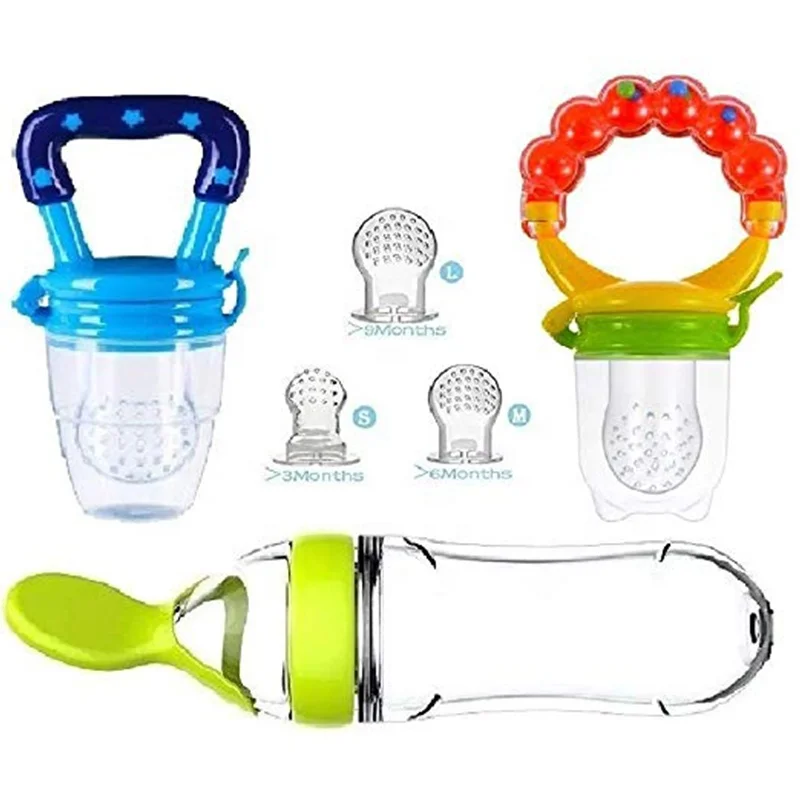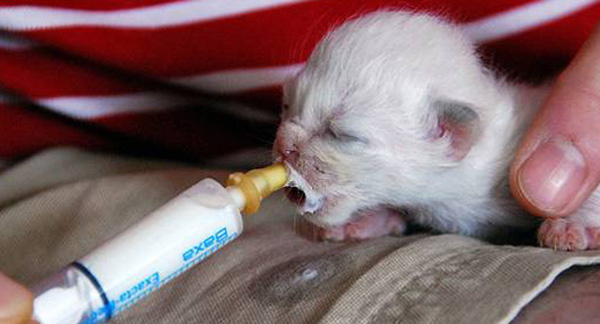Can you make baby food in a vitamix
Transforming Meals into Baby Food Purées
- sustainable,
- nutrition,
- leftovers,
- healthy,
- food-storage,
- filtration-bag,
- family,
- budget,
- baby,
- asparagus
BY: VITAMIX
You can't put a price on the satisfaction derived from feeding and nurturing your little one with fresh, unprocessed food. Of course, making your own baby food is less expensive than buying commercial baby food, but doubly so when you set aside a portion of a family meal for the purées. Vitamix machines process hard-to-blend-textures, such as celery, chicken and asparagus, with ease. Here are some ideas for transforming meals into fresh baby food purées.
Advantages
Commercial baby food's convenience comes at a cost: it contains additives and undergoes extensive heating, which decreases nutrients, in order to increase shelf life.
Baby food made from meals you make at home has more nutritional value than commercial products and no additives – you control the ingredients and can increase its shelf life indefinitely by freezing it.
Preparation Tips
- Steam fruits and vegetables before blending them to make them more digestible.
- Purée and freeze in-season vegetables so you don't have to rely on out-of-season options from the supermarket for a certain flavor your baby likes.
 For example, if your baby devours puréed squash and yams, purée and freeze them in fall and serve them in spring.
For example, if your baby devours puréed squash and yams, purée and freeze them in fall and serve them in spring. - A few drops of lemon juice in each batch of fruit or vegetable purée prevents browning.
- Adjust the consistency of the purées as needed with purified water.
- To smooth out fibrous or grainy purées, pass them through a mesh strainer lined with cheesecloth or filtration bag.
Food and Flavor Combinations
Babies have simple, undeveloped palates and don't respond well to salty, spicy additions – nor can they appreciate them. But keeping it simple doesn't mean you should settle for boring. Mix and match unseasoned whole foods to entice and develop your little one's burgeoning palate.
Make a homemade vegetable-chicken blend by processing diced chicken, and steamed carrots and kale. Combine carrots, potatoes, tomatoes, celery, beef and parsnips for a nutrient-packed baby beef stew.
To add a little fiber and whole grains to your baby's diet, go with brown rice. A blend of steamed tomatoes and brown rice makes a savory combination that fills your baby's belly without overworking it.
A blend of steamed tomatoes and brown rice makes a savory combination that fills your baby's belly without overworking it.
Everyone loves a good smoothie, so why not your little one? Recreate a classic red smoothie by blending 1 part each of apples and bananas with 2 parts each of yogurt, strawberries and raspberries. For a banana-mango version, combine 2 parts each of yogurt, banana and mango with 1 part each of apples and apricots.
Storing Homemade Baby Food
For easy storage, portion puréed leftovers into ice cube trays and freeze. Then pack the individual portions into heavy-duty freezer bags. For refrigerator storage, portion the purées into baby-food containers and keep them up to three days.
Related Articles
A Quick Guide to the Perfect Blend
Follow these quick tips for the perfect blend.
Quick and Easy Blender Recipes for Every Meal of the Day
These quick and easy blender recipes will help you prepare healthy meals from breakfast through dinner and in-between snacks.
Baby Food Recipes
Discover just how easy it is to make fresh, homemade baby food.
Some advice from a new mom
Last Updated June 19, 2020
Update May 7th, 2019: New video tutorials and demonstrations!
First one, a 90-second tutorial on making Vitamix baby food!
Second one, a long-form tutorial about mistakes we made while making Vitamix baby food:
Update April 10, 2018: We now have a baby of our own that’s the perfect age to feed baby food purees. Fun!
Here’s a clip of us on the local news talking about making baby food purees.
Video: Baby Food Blending on Local News
Original article from 2016
When the fiancée first pitched an article about baby food purees in a Vitamix, I just about puked. (I also considered inconsolably crying, flailing my limbs, and drooling).
But we were headed to Minnesota for a family weekend and my sister, Alana, was going to be there with her 7-month old son, Norman. Fine.
So I sat down with Alana and asked her some questions.
To my surprise, making baby food purees in a Vitamix (or any blender, for that matter) is actually a pretty awesome thing to do.
Here are a few highlights from the conversation. Afterwards, you’ll find three Vitamix recipes for baby food purees (good for adults, too, that need or prefer to eat their food with a spoon.)
Enter Alana: New mom and maker of her own baby food purees
Alana Matthew, 30, worked in sales at DirecTV for seven years.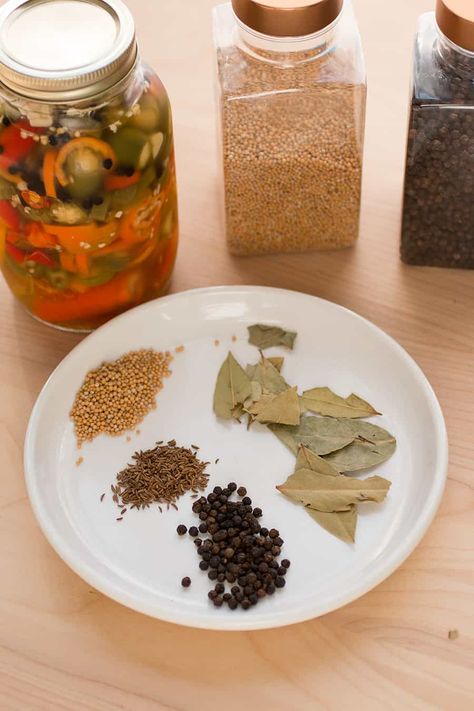 Now, she is a professional mom. Her parenting style is somewhere between thoroughly by-the-book and progressively perfectionist. Her son is Norman and was playing with (trying to “eat”) some plastic toy during our interview. Despite being my nephew, he is objectively a ridiculously cute baby.
Now, she is a professional mom. Her parenting style is somewhere between thoroughly by-the-book and progressively perfectionist. Her son is Norman and was playing with (trying to “eat”) some plastic toy during our interview. Despite being my nephew, he is objectively a ridiculously cute baby.
LINY: You are my sister. We got you a Vitamix for your wedding. Besides supporting Life is NOYOKE and being a kind sister, why do you use a Vitamix to make baby food purees for your baby?
Alana: I didn’t know anything about baby food. So when I first picked up a package of baby food, I was surprised it had other things in it besides peas. There’s like lemon, something acid, or, you know, you can read the package… The things are not bad for you. But it’s not peas.
LINY: Preservatives and…
Alana: Yeah. It sits on the shelf. So what is in it? So, if I can give him just peas, then I would prefer to do so.
LINY: Good. It’s like I coached you to say that!
Alana: Yup. I also like it because you can introduce one food at a time. Then, you give it to him for three days to see if he’s allergic. And a lot of the foods that I had to store-buy yesterday (because we’re traveling) are a mix. So, like, mango and peach. But I would prefer to give him just peach. Here is a peach. Here’s what it tastes like and see if he’s allergic.
LINY: Less is more with smoothies, too.
Alana: And also there’s the convenience. The other night, we had so many leftover brussels sprouts. We weren’t going to eat them before they went bad. So I Vitamixed them and froze them for Norman. Instead of wasting them, I fed them to the disposal. *points to the baby*
LINY: So it sounds like it helps avoid waste. Is it actually convenient to use a Vitamix to make baby food?
Alana: Yes, but the cleanup is not. That’s not the Vitamix’s fault, though. That’s just serving homemade baby food in general.
That’s not the Vitamix’s fault, though. That’s just serving homemade baby food in general.
LINY: How does baby food (in your Vitamix) compare to store bought from a price perspective?
Alana: Crazy. A jar, which is a serving, is a little over a dollar. And what is a bag of peas or a bunch of asparagus or brussels or beans?
LINY: Do you get frozen peas? Can you get fresh peas? Is that a thing?
Alana: I get frozen. But, everything else is fresh. And a bag of fresh beans costs like three dollars. And that made three ice cube trays worth. Which is like 14 servings.
LINY: So one pack of peas is worth like 15 bucks of what you’d buy in pre-made baby food.
Alana: It’s probably a dollar per serving versus 20 cents.
LINY: But do you think about that? Price?
Alana: Of course! Coming here this weekend, this was my first time having to buy baby food. And I was like, this is a dollar, per!?
And I was like, this is a dollar, per!?
LINY: Certainly you don’t always use your Vitamix to make all his baby food, right?
Alana: Right. There’s easy stuff. He loves banana. Avocado.
LINY: What do you blend up?
Alana: I’ve blended carrots, sweet potatoes, butternut squash, beans, peas, brussels sprouts, asparagus, pears, and apples.
LINY: Not all together, right? Individually.
Alana: Yes. Individually.
LINY: When you do that, do figure out what the ratio should be? Do you add water?
Alana: I steam them. I steam everything before I blend except for the pears and the apples. We have a steamer. It catches the “sweat.” That has all the nutrients, so I put that back in the blend. The steam softens them, too. No water needed.
LINY: So you make the purees and put it into ice cube trays?
Alana: Yup. Then I freeze it overnight. In the morning, I pop them out and put them into big zip lock bags. My freezer bags have labels saying the date and what it is. The night before, I take out three meals and put them in the fridge. That way they’re defrosted for the next day.
Then I freeze it overnight. In the morning, I pop them out and put them into big zip lock bags. My freezer bags have labels saying the date and what it is. The night before, I take out three meals and put them in the fridge. That way they’re defrosted for the next day.
LINY: So at Life is NOYOKE, we are 100% dairy free. But we are 100% supportive of breast milk for babies (and dare-prone brothers-in-law who are married to your twin sister). Have you ever made your baby a smoothie with breast milk?
Alana: No. But some people do popsicles. Boobsicles. Great for when they’re teething.
LINY: Our brother-in-law James would eat that.
Alana: But a smoothie? No. But the directions to make baby food say you can add water, formula, or breast milk.
LINY: Okay, back to topic. How much baby food do you make at once?
Alana: It depends on whatever I buy. For example, asparagus, I just buy a bunch.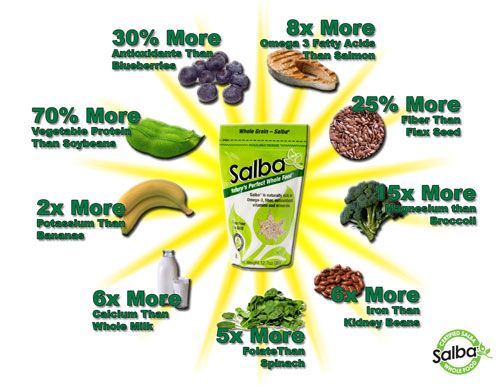
LINY: Do you have to use your Vitamix’s tamper, or no?
Alana: Yes, sometimes. I did yesterday with the brussels. Because it can get stuck on the sides.
LINY: What advice would you give to mothers about making their own baby food?
Alana: (Speaking to Normie) You think that’s funny? … I think that in the beginning, and I’m still kind of dealing with this, is that I have this overwhelming feeling that I want him to try every single vegetable. And I have to give it to him for three days. But if you’re making homemade baby food purees, the amount of vegetables in the world is endless. But if you’re buying pre-made, there’s three: Peas, carrots, sweet potatoes. So, I try to remind myself that I don’t have to introduce him to every single one. He’ll try them in time.
LINY: Let him make his own mistakes, eh?
Alana: And, he likes pears. So I always have frozen pears in a bag.
LINY: Any other advice?
Alana: It’s a lot of dishes. Because my doctor recommends, basically, two things every meal. So a cereal and a vegetable. Or a cereal and a fruit. Or a fruit and a veggie. And so it’s two dishes right there.
LINY: What do doctors know about nutrition?
Alana: Nothing.
LINY: Thank you. I’m going to link to that article I wrote about Doctors knowing nothing about nutrition. Okay, go on.
Alana: Sometimes I use a baby-sized, cheap mixer we were given. Like for a single peach. “You like peaches, don’t you cause they’re yummy!”
LINY: I get that. If you had an S-Series (in-depth review), you’d really be a one-stop-shop-baby-food-puree-maker-lady.
Alana: So why didn’t you get us that one?
LINY: Because the Pro 750 (in-depth review) is better.
Alana: I think it’s time for a nap.
Other Noteworthy Versions
- My Life on a Plate: Baby Food | Butternut Squash Puree
- Do It On a Dime FAMILY: How to make baby food: BULK COOKING
- MOMables: How to make baby food at home
Recipe
- Yield: 15 servings, approximately
- You're needed for: 10 minutes
- Until it's done: 10 minutes
- Lenny Gale
Baby food purees in a blender
Ingredients:
- peas - one bag frozen
- asparagus - one bunch, fresh
- sweet potatoes - 3, peeled
- pears - 3, cored
- carrots - 3 large carrots
- apples - 3, cored
- beans - 3 cups
- corn - 3 cups
- squash - 3 cups
Instructions:
- Pick one ingredient.

- Peal and seed it.
- Steam it.
- Blend it.
- Pour into an ice cube tray.
- Store in freezer for up to three months.
- Defrost overnight in refrigerator before serving.
NOTE: This “recipe” is adapted from this baby food puree instructional on the US Vitamix site.
Useful tips for Let’s Talk Baby Food Purees
Here’s a summary of tips for making baby food purees from the convo above:
- Embrace the cost savings. They’re significant.
- Steam, first. Use the “sweat” in the blend to maximize nutrients.
- Use ice trays to freeze the baby food overnight.
- Pop cubes into a plastic bag and label.
- Pluck food from freezer for next day the night before.
- Don’t worry about exposing baby to every food on the planet.
- Enjoy the precious moments. It flies by.
What can a child cook in a blender
August 6, 2014 Food Health
Instead of buying expensive baby food, you can make fruit and vegetable purees at home with a regular blender. Here are five healthy vitamin mix recipes for kids.
Here are five healthy vitamin mix recipes for kids.
Iya Zorina
Author of Lifehacker, athlete, CCM
When your child is 4–6 months old, he starts to pay attention not only to milk, but also to other foods. After finishing his bottle of milk, the child may try to take something from your plate. If you've had this before, it's time to add some soft foods to your baby's diet. But before you go shopping for baby puree, try making it at home. Here are five healthy baby food recipes that can be made in minutes in a blender.
Store-bought infant formula contains more sugar and salt and less of the natural fibers that homemade formula would have.
In addition, shop mixes are sterilized, due to which vitamins and other useful substances are killed. And, of course, the price - homemade baby formula will cost you half the price.
So if you have a blender and a few minutes to spare, why not try making your own blend? Here are five recipes that are quite suitable for a child.
1. Apple puree
Apple pureeIngredients:
- water - 100 g;
- 3 medium red or yellow apples, peeled and cut into small cubes;
- cinnamon - 1 pinch.
Combine the ingredients in a saucepan and simmer for about 12 minutes until the apples are tender. After that, we send the mixture to a blender and make a puree.
During cooking, you can add as much water as needed. Serve the puree as is, or you can freeze it in ice cube trays and serve it on a hot day.
2. Raspberry-banana puree
Ingredients:
- 1 banana;
- raspberries - 0.5 cup.
Place the ingredients in a blender and blend until smooth. The child will surely like the natural sweetness of the mixture, and not only him - not only children, but also adults can enjoy the fruit and berry smoothie. For example, you can add a vitamin sweet mix to ice cream or Greek yogurt.
3. Fiesta fruit breakfast
Fiesta Fruit BreakfastIngredients:
- water - 75 g;
- oatmeal - 1 tsp;
- crushed raisins - 1 tsp;
- small banana (mashed) - 0.
 5 pcs.;
5 pcs.; - ground flaxseeds (prevent constipation) - 0.5 tsp.
Combine all ingredients in a saucepan and bring to a boil. After that, reduce the heat to a minimum and cover with a lid, cook for another 10 minutes. Pour the mixture into a blender and blend until desired consistency.
This puree is especially useful for preventing constipation. In addition, the mixture is rich in minerals and vitamins that strengthen the growing body. You can give it to older children, without first rubbing it in a blender.
4. Puree of chickpeas and vegetables
Puree of chickpeas and vegetablesIngredients:
- unsalted chicken broth - 1 cup;
- milk (breast or baby food) - 0.25 cup;
- chickpeas - 1 cup;
- small onion (sliced) - 0.5 pcs.;
- carrots (peeled and chopped) - 1 pc.;
- celery (washed and chopped) - 1 sprig;
- garlic (chopped) - 1 clove;
- bay leaf - 1 pc.;
- dried thyme - 1 pinch.
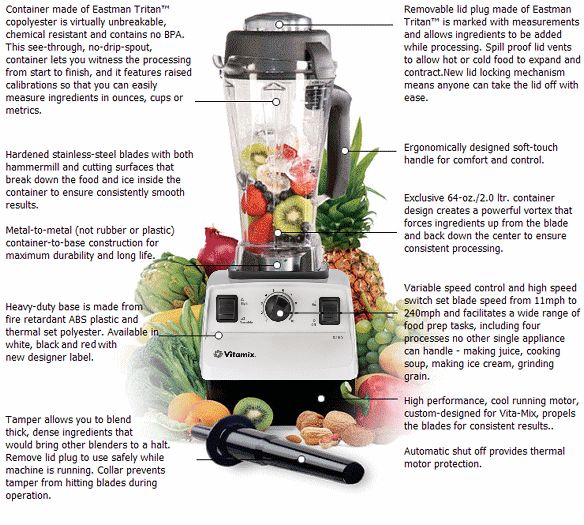
Combine all ingredients except milk and thyme in a saucepan and bring to a boil, then reduce heat and simmer for 10 minutes, covered, until all ingredients are soft.
Drain the broth into a separate saucepan, remove and discard the bay leaf. Add milk and thyme and heat for five minutes.
Pour the mixture into a blender and add some of the remaining broth. The final consistency depends on the amount of broth. Blend in a blender until pureed.
5. Egg, vegetable and rice puree
Egg, vegetable and rice pureeIngredients:
- 1-2 hard-boiled egg yolks;
- brown rice (boiled) - 1 cup;
- vegetables (boiled and chopped) - 0.25 cups.
Blend all ingredients in a blender until pureed. If you don't want to use egg yolks, you can make the mixture without them.
In any case, before formulating formulas, check with your pediatrician about the foods you can and shouldn't give your baby.
Homemade baby puree: recipes
Homemade fruit and vegetable puree: cooking secrets
Vegetable and fruit puree is often the first meal of the baby after breast milk or formula, so many mothers prefer to cook it on one's own. Although modern manufacturers convince us that baby food is devoid of preservatives and harmful additives, fresh vegetables and fruits are much healthier, especially when it comes to infant nutrition. Yes, and cooking baby puree at home is not so difficult.
Although modern manufacturers convince us that baby food is devoid of preservatives and harmful additives, fresh vegetables and fruits are much healthier, especially when it comes to infant nutrition. Yes, and cooking baby puree at home is not so difficult.
Vegetables or fruits?
Let's try to make baby puree for our beloved baby. Despite the fact that pediatricians of the last century recommended starting complementary foods with fruits, it is better to first introduce the child to vegetables - modern doctors and nutritionists have come to this conclusion. Boiled vegetables do not irritate the gastrointestinal tract, are better absorbed, satisfy hunger, do not cause allergies and increased gas formation. In addition, vegetables do not contain fructose, which irritates the pancreas. And one more weighty argument in favor of the fact that it is better to start with vegetables - fruits are tastier, and if the baby tries them first, he will refuse vegetables, because they will seem to him more insipid.
How to prepare baby vegetable puree
What can baby puree be made of? The ideal puree for the first feeding is from cauliflower or zucchini. A little later, you can introduce pumpkin, broccoli, carrots, potatoes and green peas. Before cooking, vegetables are washed well, peeled, cut into pieces and cooked - steamed, in the oven or in the usual way, in water. The first two methods are preferable because oven roasting and steaming preserve the vitamins, minerals, nutrients, and natural color in the vegetables. And most importantly - such vegetables are much tastier. Some nutritionists recommend boiling vegetables with their skins on before peeling them, so choose your own cooking method.
If you do have to cook vegetables in a saucepan, use an enamel pot, add less water and dip the vegetables into boiling water. Boil until soft, but do not overcook vegetables and fruits, otherwise they will become tasteless and lose a lot of vitamins. Ready vegetables are chopped with a blender until smooth and slightly diluted with water, vegetable broth, breast milk or mixture to a gruel state, since the child does not yet know how to digest thick food. Small pieces of vegetables in puree sometimes cause the baby to refuse to eat, so the knives in the blender should be well sharpened, and if there is no technique, you can grind the vegetables through a sieve. Salt and spices are usually not added to baby vegetable puree, and if the baby is more than 6 months old, you can put a little butter in the puree.
Small pieces of vegetables in puree sometimes cause the baby to refuse to eat, so the knives in the blender should be well sharpened, and if there is no technique, you can grind the vegetables through a sieve. Salt and spices are usually not added to baby vegetable puree, and if the baby is more than 6 months old, you can put a little butter in the puree.
A few rules for making baby puree at home
- Use only fresh vegetables and fruits.
- Water for cooking vegetables must be filtered or bottled.
- If you are using frozen foods, choose only whole fruits and vegetables as they retain the most nutrients.
- All utensils for preparing baby food should be perfectly clean, so if the knife falls on the floor, it should be washed well. Also, the presence of pets in the kitchen during the cooking process is not allowed.
- Do not include high nitrate vegetables and fruits such as spinach, lettuce, beetroot, melon, and watermelon in infants' diets.

- Store-bought vegetables are recommended to be soaked in water to remove nitrates: 1-2 hours for this, up to 24 hours for potatoes.
- Mix sour-tasting fruits and berries with sweet fruits - for example, blackcurrant goes well with banana or pear. Sour puree is unlikely to please the baby.
- Give your child only fresh food, but yesterday's puree from the refrigerator is better to eat yourself.
Handmade fruit puree for children
Children are more likely to eat fruit puree because fruits are tastier and sweeter. Fruits contain a large amount of vitamins, minerals, trace elements, fiber and antioxidants, so they are very useful for a growing organism. However, fruits are strong allergens, especially berries, bananas, pomegranates and apricots, so they should be given with caution, watching the child's reaction. The most low-allergenic fruits are apples and pears, so it is better to start complementary foods with them, and then introduce all other fruits.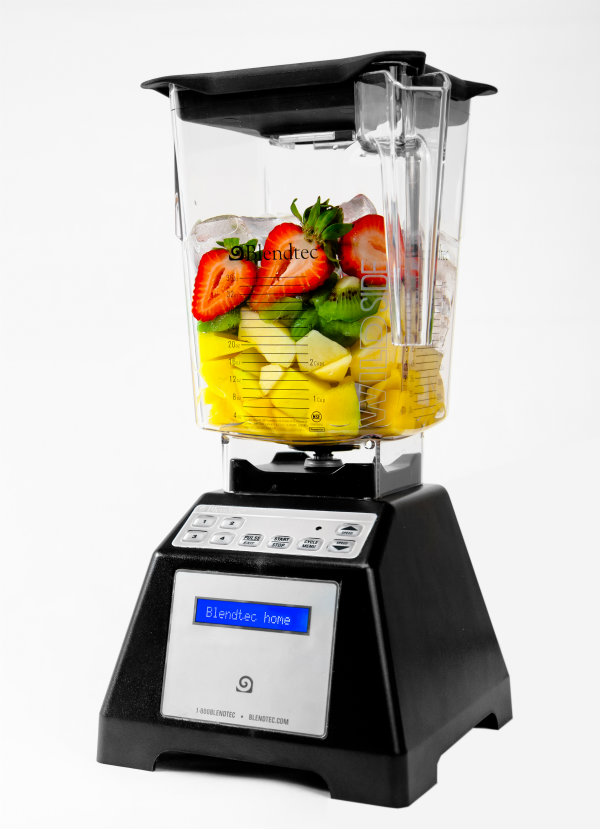 First, the baby is fed with a one-component puree made from only one product, and then you can mix different vegetables and fruits, and not only among themselves. Very tasty combinations of fruits and vegetables, such as apples and zucchini, pumpkins and pears.
First, the baby is fed with a one-component puree made from only one product, and then you can mix different vegetables and fruits, and not only among themselves. Very tasty combinations of fruits and vegetables, such as apples and zucchini, pumpkins and pears.
Fruit must be of good quality, without damage, ripe and juicy, and the rules for preparing fruits do not differ from the rules for cooking vegetables. Naturally, fruit puree is not sweetened with honey and sugar - the later the child learns the taste of sugar, the stronger his health will be.
Aromatic pumpkin puree
Babies love to eat pumpkin because of its pleasant sweetish taste, besides pumpkin is very healthy. It contains a whole storehouse of various vitamins, including vitamin T, which normalizes the metabolism in the body. For pumpkin puree, small pumpkins are suitable, since large fruits are not as tasty and difficult to peel.
Cut the pumpkin in half, and then into small pieces, one or two of which (depending on the appetite of the crumbs) cut into cubes. Boil the pumpkin in a double boiler or in water for 20 minutes, while warm, beat with a blender to a smooth puree and dilute if necessary with water or a mixture. Add oil and salt depending on the age of the child.
Boil the pumpkin in a double boiler or in water for 20 minutes, while warm, beat with a blender to a smooth puree and dilute if necessary with water or a mixture. Add oil and salt depending on the age of the child.
Gentle Broccoli Puree
One of my favorite homemade baby puree recipes is broccoli. This cabbage is extremely useful because it contains potassium, iron, calcium and other valuable substances. It has much more vitamin C than lemon, and the reason for its nutritional value is its high protein content.
Separate the broccoli into florets, wash thoroughly and steam for 20 minutes. Cabbage cooks faster in water - fresh broccoli will take 7 minutes, and frozen - about 15 minutes. Broccoli puree does not need much water, it should lightly coat the vegetables. After the cabbage becomes soft, chop it in a blender or pass through a sieve. If you're mashing for kids older than a year old, be sure to add butter - the little ones will gobble up broccoli on both cheeks!
How to make baby pear puree at home
Pear is a very delicate, tasty and healthy fruit that rarely causes intolerance. In addition to the high vitamin value, the pear has other beneficial properties - it facilitates digestion and removes toxins from the body.
In addition to the high vitamin value, the pear has other beneficial properties - it facilitates digestion and removes toxins from the body.
For baby food, choose green pears to reduce the risk of allergies, which are rare among babies. Peel the fruits from the peel and core with seeds, and then stew the pear in a bowl with a thick bottom in a small amount of water for 15 minutes. Let the pear cool slightly and puree it in a blender with a little of the remaining pear broth. For large kids, fruits can not be boiled, but add half a teaspoon of natural honey to the puree.
Zucchini and apple puree
Little gourmets will love this delicious puree, besides, zucchini is considered the most hypoallergenic vegetables, which, due to their high potassium content, have a beneficial effect on the heart. Apples contain iodine, iron and phosphorus, and due to the high concentration of vitamin C, apples help in the prevention of colds and viral infections.
Wash the zucchini and apples well, de-seed them, cut into pieces and cook in a pot for about 20 minutes, considering that the zucchini will cook 5 minutes faster. By the way, apples are steamed for 15 minutes, zucchini - 10 minutes. Next, vegetables and fruits are chopped in a blender, mixed and brought to a boil. For allergic children, this is the best side dish!
Exotic mango
Sometimes you can pamper your baby with exotic fruits, such as mango puree. This is a very delicate fruit with an original taste, containing 12 amino acids and improving sleep.
Choose only ripe fruits that are soft and red-yellow in color. Peel the mango from a thick skin and a large bone, put the pulp in a blender, add 2 tbsp. l. water and mash it, and then heat it in a saucepan for several minutes. For a baby up to a year old, it is better to give mashed potatoes with heat treatment to facilitate digestion, and older children can be fed raw mangoes.
Carrot-Potato Puree
Make normal potato puree without oil. Peel the carrots, grate them and stew them with butter and vegetable broth - about 1 tsp is required for 200 g of carrots. butter and 150 g of broth. When the carrot becomes very soft, wipe it through a sieve, and then put it on a plate, put mashed potatoes on the second half. Let the child choose whether to mix two types of puree for him or eat separately!
butter and 150 g of broth. When the carrot becomes very soft, wipe it through a sieve, and then put it on a plate, put mashed potatoes on the second half. Let the child choose whether to mix two types of puree for him or eat separately!
Pumpkin and apple puree
This sweet, sugar-free pumpkin-apple puree, cooked in a double boiler, is suitable for children who are already accustomed to “adult” food and are able to perceive a new unusual dish. It is better to take a pumpkin with a gray or green skin and with bright pulp - such fruits contain more vitamins and other useful substances. Apples are green because they have fewer allergens.
Cut pumpkin and apple flesh without peel and seeds into pieces, place in a double boiler and cook for 20 minutes. Grind pumpkin, apples and raisins in a blender or by hand with a pusher if the child has already learned to chew. They say that this puree is very good for skin and hair, and you can check the truth of this statement yourself if you start feeding this dish to your baby.





